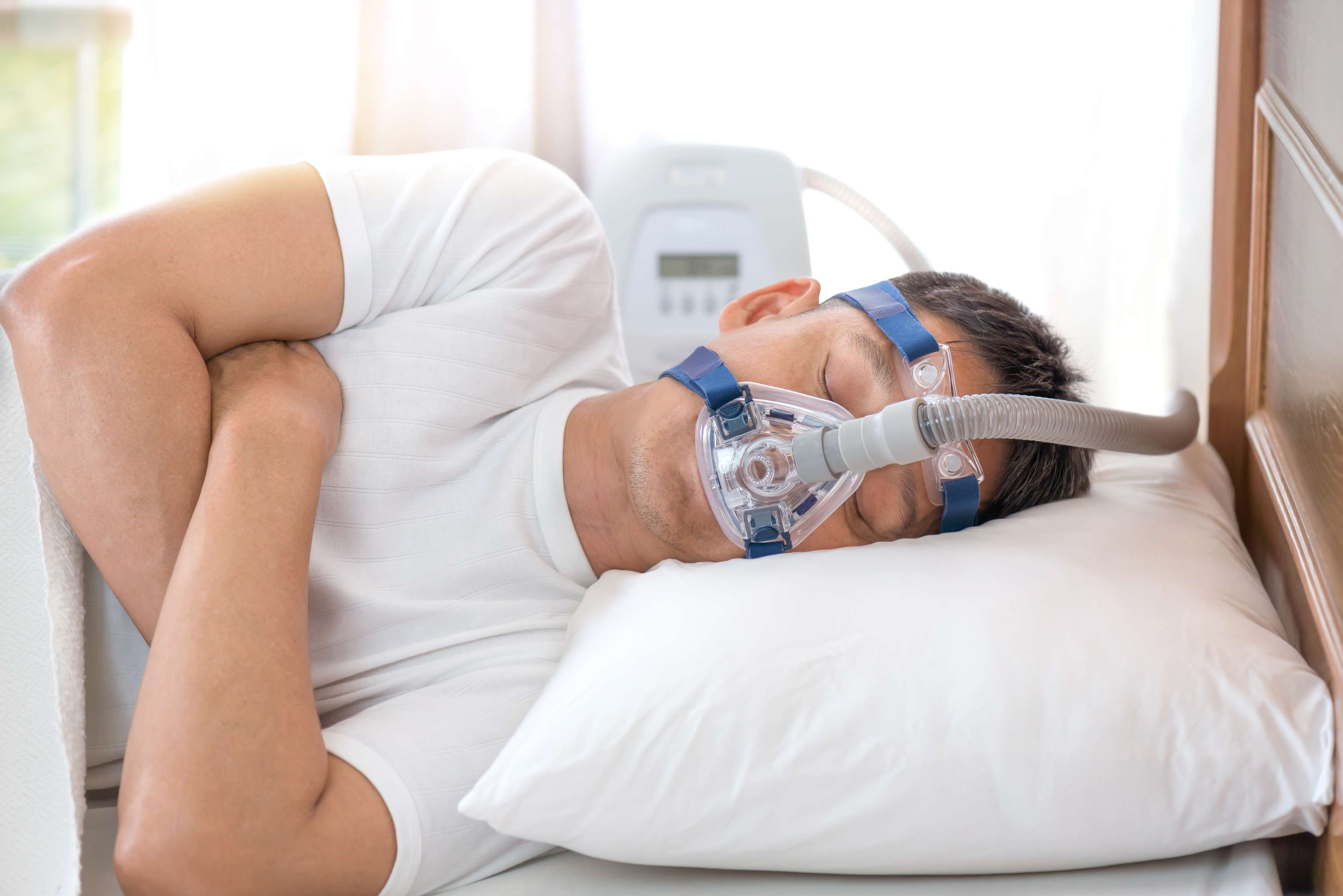Link between sleep apnea and elevated blood pressure in adolescents?

Sleep apnea:
Everyday snoring and sleep apnea are among the so-called sleep-related breathing disorders, or SBAS.
During the nightly rest phase, the muscles in the mouth and throat area relax. This causes the airways to narrow and the uvula or soft palate can produce the well-known snoring sound - after all, almost every second person snores.
In the case of sleep apnoea, there are also several brief cessations of breathing. The affected person does not wake up rested, which means that the quality of life can suffer. Basically, a distinction is made between:
- Obstructive sleep apnea (OSAS):
Als häufigste Form der Schlafapnoen erschlaffen bei diesem Syndrom die Gaumenmuskeln während der Schlafphase. - Central sleep apnea:
Während die oberen Atemwege offenbleiben, bewegen sich die Atemmuskeln der Brust und des Zwerchfells nicht genug – Auslöser dabei kann eine Funktionsstörung des zentralen Nervensystems sein.
Obstructive sleep apnea syndrome is estimated to occur in about 10% of school-aged children. While 50% of affected children overcome the sleep disorder by the time they reach puberty, the other half remain with chronic sleep problems. Previous research has been able to correlate sleep apnea with high blood pressure and a higher risk of heart disease in adults. However, according to researchers, long-term health effects of this sleep disorder in adolescent children have been marginally studied.
Since treating physicians have difficulty making predictive diagnoses (whether a child can overcome sleep apnea in adolescence), early treatment would be beneficial for long-term health. Researchers in Pennsylvania, USA have therefore analyzed the possible association between obstructive sleep apnea and elevated blood pressure in adolescence in the study.
Sleep studies:
The study, published in 2021 in the journal JAMA Cardiology, examined the Penn State Child cohort from 2000 to 2005, which was a randomized group of children consisting of 700 five- to 12-year-olds from the general population. A total of 60.1% of this cohort, or 421 participants were followed up between 2010 and 2013 after 7.4 years as adolescents aged 12 to 23 years. Collected data were analyzed between July and October 2020.
Results were obtained using polysomnography performed in the laboratory. In this process, the person being studied is hooked up to the machine and continuously examined for several bodily functions throughout the sleep phase. These were then combined into what is known as an apnea-hypopnea index. Hypopnea is the reduction of breathing depth by 50% over a period of at least 10 seconds.
Other examination methods were:
- Blood pressure measured in the sitting position using the US guidelines recommended pediatric criteria.
- Orthostatic hyperactivity (i.e., systolic blood pressure drop) by blood pressure measurement in the supine or standing position.
- Visceral (i.e. visceral) adipose tissue measured by so-called X-ray absorptiometry.
Results:
Of the 700 children studied, 12% recorded obstructive sleep apnea, or OSA for short. During follow-up, the children showed improvements in OSA at a mean age of 16 years. In the process, some had had their palates or adenoids removed, which the researchers say resolved the sleep disorder in some cases. However, during the follow-up period, 21 children still suffered from OSA. Adolescents with persistent OSA showed a nearly threefold incidence of elevated blood pressure. According to research, adolescents with elevated blood pressure may have a significantly higher risk of having an early heart attack or sleep attack in adulthood.
Conversely, children with regressed obstructive sleep apnea did not have elevated blood pressure measured. The researchers also noticed that chromosomally male subjects in particular often had elevated blood pressure in adolescence despite regressed OSA.
Results of the cohort study suggest that obstructive sleep problems due to sleep apnea in childhood are associated with hypertension in adolescence if it does not regress during further pubertal or adolescent development.
Conclusion:
The results of the study show that persistent sleep apnea is associated with a nearly threefold likelihood of elevated blood pressure in adolescence. The expression of sleep apnea was associated with elevated blood pressure and orthostatic hyperactivity. Results of the analysis suggest that sleep apnea in adolescents carries some risk in association with hypertension. According to researchers, early treatment of the disease could prevent persistent cardiovascular consequences.
Sources
- Fernandez-Mendoza J, He F, Calhoun SL, Vgontzas AN, Liao D, Bixler EO. Association of Pediatric Obstructive Sleep Apnea With Elevated Blood Pressure and Orthostatic Hypertension in Adolescence. JAMA Cardiol. Published online June 23, 2021.
- National Heart, Lung and Blood Institute
- Orthostatische Hypotonie (Medizin Wissen)
- Schlafapnoe (Lungenärzte im Netz)
- Schlafapnoe (Netdoktor)
- Behandlung einer obstruktiven Schlafapnoe (Gesundheitsinformation)
- Gestörter Schlaf (Intersom)

Danilo Glisic
Last updated on 04.10.2021
Your personal medication assistant
Browse our extensive database of medications from A-Z, including effects, side effects, and dosage.
All active ingredients with their effects, applications, and side effects, as well as the medications they are contained in.
Symptoms, causes, and treatments for common diseases and injuries.
The presented content does not replace the original package insert of the medication, especially regarding the dosage and effects of individual products. We cannot assume liability for the accuracy of the data, as the data has been partially converted automatically. Always consult a doctor for diagnoses and other health-related questions.
© medikamio